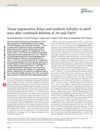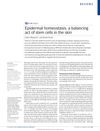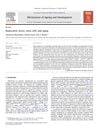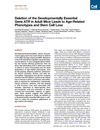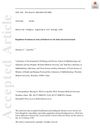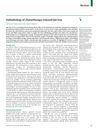Removing All Obstacles: A Critical Role for p53 in Promoting Tissue Renewal
April 2010
in “
Cell Cycle
”
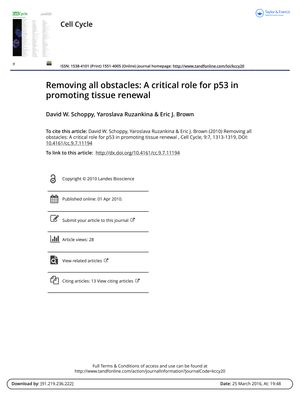
TLDR The gene p53 is crucial for removing damaged cells to allow for healthy tissue renewal.
The document from 2010 highlights the dual role of the p53 tumor suppressor gene in both restricting and promoting tissue renewal. It shows that p53 activation prevents the proliferation of damaged or aberrant cells, which is crucial for maintaining tissue integrity and preventing age-related pathologies. The study found that the absence of p53, combined with the deletion of ATR, a gene involved in DNA replication and genome maintenance, led to rapid lethality in mice due to the accumulation of DNA-damaged cells in highly proliferative tissues. This was particularly evident in the hair follicle regeneration process, where mice without p53 and ATR experienced severe delays and hair graying. The findings suggest that p53-mediated clearance of damaged cells is essential for efficient tissue renewal. Additionally, the document proposes that targeting the ATR-Chk1 pathway could be a therapeutic strategy for treating p53-deficient cancers, as it may increase genomic instability and promote the elimination of terminally damaged cells. The research was supported by the National Institute on Aging and the Abramson Family Cancer Research Institute.
